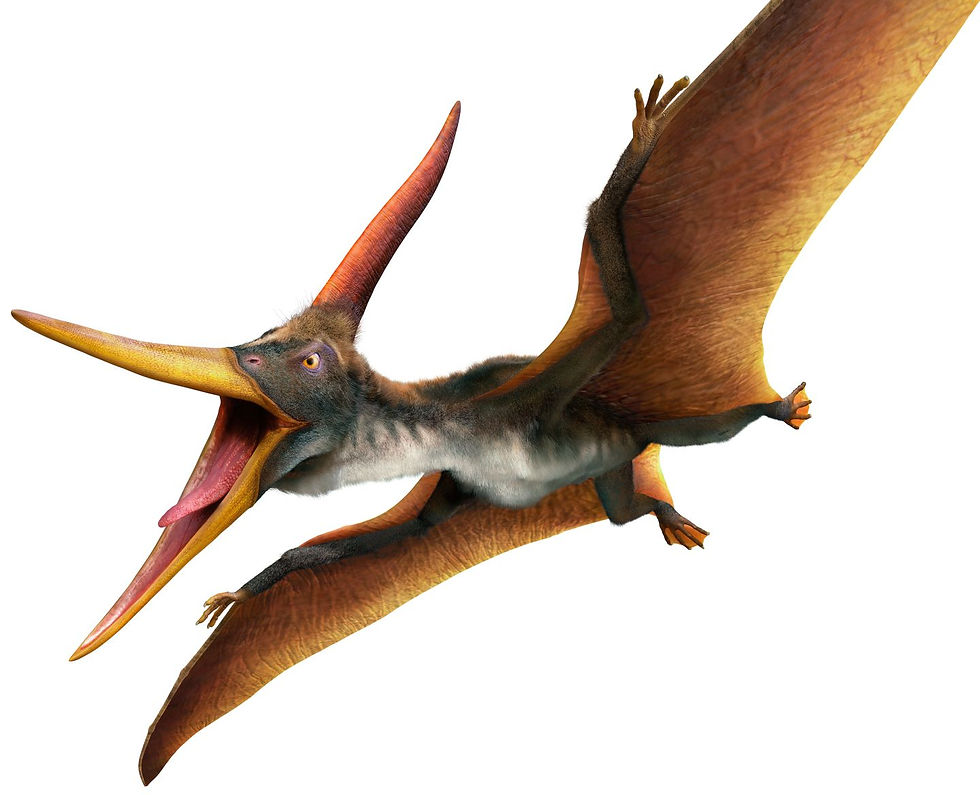
CREATURE-PEDIA
Pteranodon




Pteranodon (meaning “toothless wing”) is a large pterosaur that lived during the late Cretaceous period throughout what is now North America and possibly Europe. Pteranodon was a very large pterosaur compared to other pterosaurs. Adult Pteranodon specimens from the two major species can be divided into two distinct size classes. The smaller class of specimens have small, rounded head crests and very wide pelvic canals, even wider than those of the much larger size class. The size of the pelvic canal probably allowed the laying of eggs, indicating that these smaller adults are females. The larger size class, representing male individuals, have narrow hips and very large crests, which were probably for display. Adult male Pteranodon were among the largest pterosaurs, and were the largest flying animals known until the late 20th century, when the giant azhdarchid pterosaurs were discovered. The wingspan of an average adult male Pteranodon was 5.6 metres (18 ft). Adult females were much smaller, averaging 3.8 metres (12 ft) in wingspan. Pteranodon had a toothless beak. This suggests that Pteranodon lived primarily on fish and other small marine animals. Pteranodon also possessed a cranial crest. The size of the crest differentiated between genders and species of Pteranodon. The wings of Pteranodon, though large, were more fragile than bird wings, and much more thin. They were leathery and could be easily damaged. A ground Pteranodon was vulnerable both to predators, such as Tyrannosaurus rex and to starvation. Although Pteranodon was not related to birds, it lived in a manner similar to the modern sea birds, such as the albatross. To escape predators, to catch the thermals and to be close to the sea, Pteranodon lived and nested on top of high coastal cliffs and mountains. There it nested and raised its young. Pteranodon was a fish-eater, and hunted out at sea, far away from the coast. There, it either dove into water like the modern gannets, or pickled fish from the surface of water, like the frigate birds and the albatross. This is based on the fact that Pteranodon had a high aspect ratio (wingspan to chord length) similar to that of the albatross. Albatrosses spend long stretches of time at sea fishing, and use a flight pattern called "dynamic soaring" which exploits the vertical gradient of wind speed near the ocean surface to travel long distances without flapping, and without the aid of thermals (which do not occur over the open ocean the same way they do over land). While most of a Pteranodon flight would have depended on soaring, like long-winged seabirds, it probably required an occasional active, rapid burst of flapping, and studies of Pteranodon wing loading (the strength of the wings vs. the weight of the body) indicate that they were capable of substantial flapping flight, contrary to some earlier suggestions that they were so big they could only glide. Like other pterosaurs, Pteranodon probably took off from a standing, quadrupedal position. Using their long forelimbs for leverage, they would have vaulted themselves into the air in a rapid leap. Almost all of the energy would have been generated by the forelimbs. The upstroke of the wings would have occurred when the animal cleared the ground followed by a rapid downstroke to generate additional lift and complete the launch into the air.
Did You Know?
Pteranodon preyed on fish and dived in the water to hunt them (just like a Pelican).

